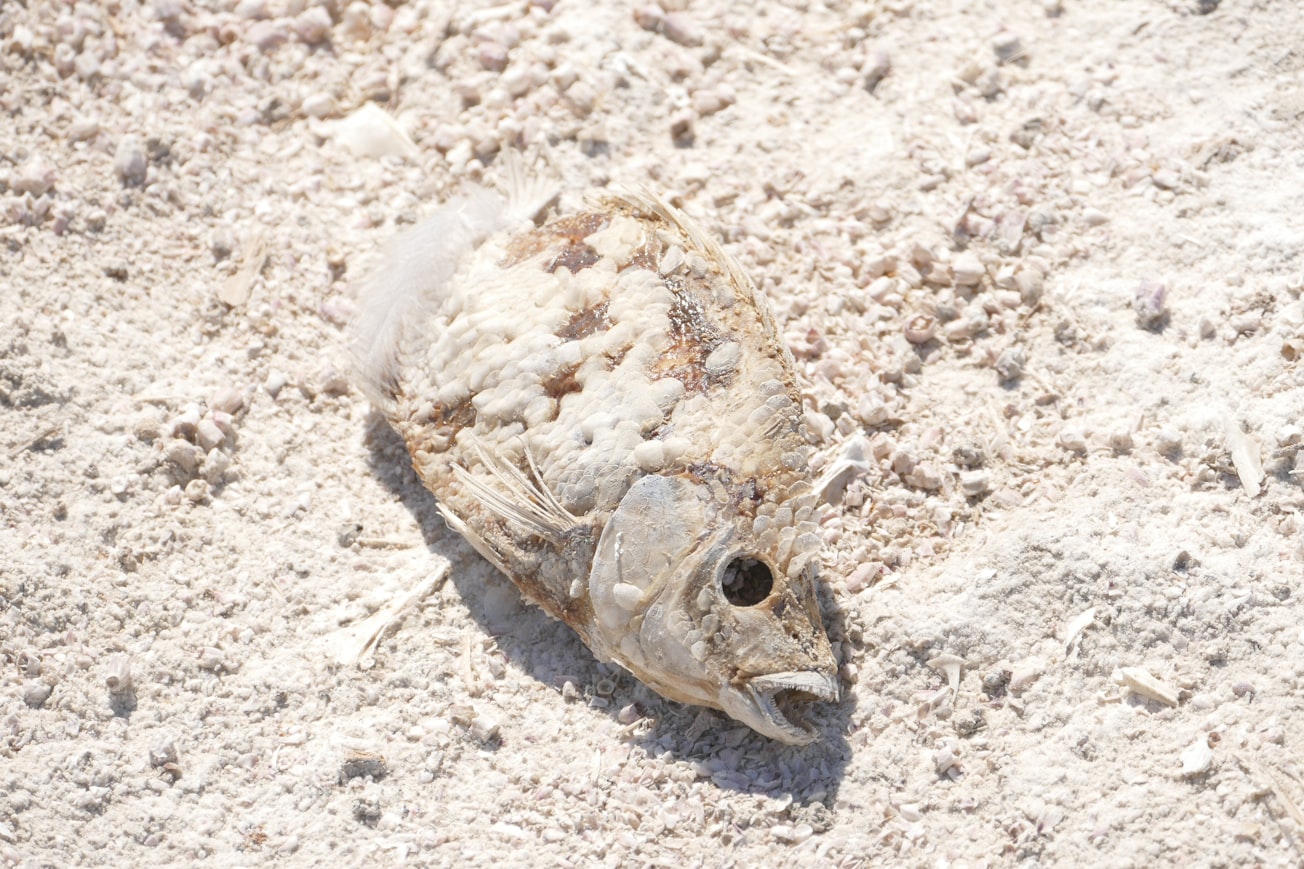What is it about?
Minnesota has a growing salty water problem that threatens its freshwater fish and other aquatic life. The Minnesota Pollution Control Agency (MPCA) is tasked with protecting the use of water for a variety of purposes such as maintaining healthy aquatic communities, sources of drinking water, industrial use, and recreation, called beneficial uses. Chloride, from activities such as de-icing and water softening, gets into lakes, streams and groundwater and may negatively impact aquatic life, sources of drinking water, and other uses. Because it dissolves readily in water, there is no easy way to remove the chloride and it takes only one teaspoon of salt to permanently pollute five gallons of water. High levels of chloride in water, is toxic to sensitive aquatic life including fish and freshwater mussels (Soucek et al., 2011; Wang et al., 2018). Under certain circumstances, elevated levels of chloride in sources of drinking water may pose a potential threat to public health as seen in Flint, Michigan, and Washington DC (Roy and Edwards, 2019). This is due to the increased possibility of metal leaching in drinking water distribution systems from corrosive source water (Ng and Lin, 2015; Stets et al., 2018). The Environmental Protection Agency (EPA) has established a national chronic chloride criterion of 230 mg/L and an acute criterion of 860 mg/L to protect freshwater aquatic life. The EPA also has a secondary (non-enforceable) drinking water standard for chloride, known as a secondary maximum contaminant level (SMCL), of 250 mg/L, set to prevent drinking water from having an unpleasant salty taste. Minnesota has adopted both the aquatic life criteria and SMCL into its own water quality standards (WQS). Wastewater treatment plants (WWTPs) that discharge to Minnesota’s waters are required to obtain permits to ensure that the levels of discharged pollutants do not cause or contribute to a violation of water quality standards, thereby protecting beneficial uses. The majority of Minnesota homes and communities rely on groundwater as the source of drinking water. Minnesota has naturally occurring hard groundwater, resulting in high demand for home-based water softening, typically with ion-exchange (IX) softeners, which use a resin base and a sodium-chloride (brine) solution to function and recharge. As softened water is used in homes and washed down drains along with the backwash from the brine used in regenerating the IX home softeners, it travels to the local WWTP. The salt present contributes to chloride loading at the WWTPs. After analyzing data on the discharge of chloride from facilities in Minnesota, we find that many municipal WWTPs need water quality-based effluent limits (WQBELs) to ensure that chloride WQS are met. Current levels of chloride discharged show that many municipal WWTPs would not be able to meet the resulting WQBELs and are, therefore, faced with the need to find ways to reduce chloride in their effluent. Based on an MPCA engineering analysis, technologies available for sufficient chloride reduction for WQS to be met, are limited and expensive, particularly at the WWTP end (end-of-pipe). Due to the expense of treatment systems that remove chloride end-of-pipe, many cities are evaluating ways to reduce the amount of salt coming into their WWTP system. The MPCA’s ultimate goal is protecting water quality from the impacts of chloride pollution, which requires solving the key problem of ensuring WWTPs meet their chloride limits at reasonable cost. A critical barrier to solving this problem is the need for households to have softened water. Based on the MPCA’s engineering analysis on alternative solutions to these problems, shifting to a system of centralized water softening has the potential of being an effective solution supporting the above goals. However, to be successful, a solution needs to be both environmentally effective and cost-effective. This calls for a cost-based comparison of centralized softening to other available alternatives for WWTP chloride compliance, which is the subject of this paper. To test the effectiveness of centralized softening as a potential solution to chloride reduction while providing water at reasonable cost, we examined the costs of moving from a system of home-based water softening to a system of centralized softening in Minnesota through related research and estimation of lifetime costs for both options. We estimated costs of both options relative to a Business as Usual (BAU) or baseline option, using annualized 20-year loan payments and Net Present Value (NPV), applied to 84 cities with matching data on drinking water plants and WWTPs for a variety of factors including capital and operation and maintenance (O&M) costs of relevant technologies, facility liabilities, and home-softener costs. We found that centralized softening using either reverse osmosis (RO) or lime-softening technologies, is the more cost-effective solution for users and cities, compared to the alternative of home-based softening with end-of-pipe chloride treatment. The cost ratio between the two options is in the range 1:3—1:4. Between the two centralized softening options, we found RO-softening to be the lower cost option, only slightly more costly (1.1 cost ratio) than the BAU option, i.e., using home-based softeners and not treating chloride. Our results show that centralized softening could be a critical component of effective chloride management policies compared to other alternatives and provide helpful information to multiple stakeholders interested in an effective solution to chloride pollution. Unlike home-based softening, centralized softening does not add chloride to the environment thereby reducing negative impacts on aquatic life, recreation, and potential long-term impacts on drinking water sources. By helping communities avoid the risk of corrosive source waters and the costs to restore potential damages, centralized softening also provides a potential benefit to public health. Current research shows centralized softening also provides a climate change benefit by reducing use of home-based softening appliances (Beeftink et al., 2020). As marginalized communities typically have higher water costs and are underserved in environmental amenities (Fernandez-Bou et al., 2021), the economic, environmental, and public health benefits from centralized softening could also improve overall equity and environmental justice. Considering these additional benefits to the environment, public health, and cost savings associated with removal of home-based softeners, centralized softening may be a viable solution to meet MPCA’s goals and manage Minnesota’s chloride problem.
Featured Image

Photo by Michael Herren on Unsplash
Why is it important?
Chloride pollution is an ongoing problem affecting beneficial water uses such as aquatic life, recreation, and sources of drinking water. In regions with hard water such as Minnesota, home-based water softening adds to further chloride pollution. Technologies to manage chloride pollution are limited and expensive to small communities, which may also feature equity and environmental justice problems. We analyze alternative solutions to chloride reduction in 84 Minnesota cities and find centralized softening to be the most cost-effective alternative, which also has environmental and public health benefits to communities. Chloride pollution adds to freshwater salinization syndrome, shown by current research to be a growing problem for sensitive aquatic species and drinking water supplies. It could also be worsened by climate change and higher migration to urban areas. Consequently, our findings on a cost-effective solution to chloride management with additional environmental and social benefits, could inform more resilient decisions on managing salt pollution in the future.
Read the Original
This page is a summary of: Centralized softening as a solution to chloride pollution: An empirical analysis based on Minnesota cities, PLoS ONE, February 2021, PLOS,
DOI: 10.1371/journal.pone.0246688.
You can read the full text:
Contributors
The following have contributed to this page










